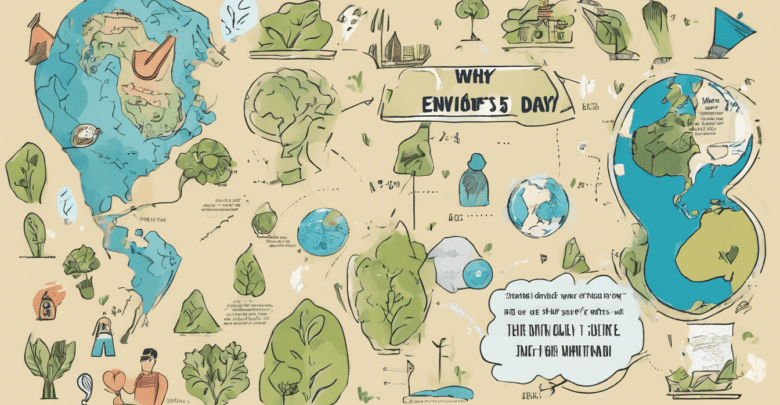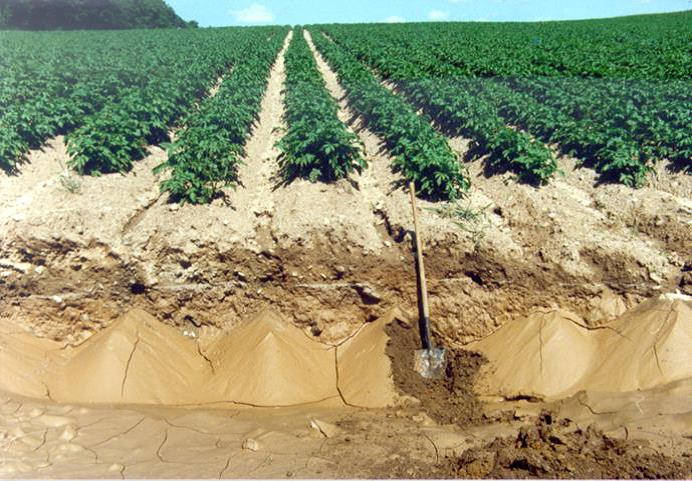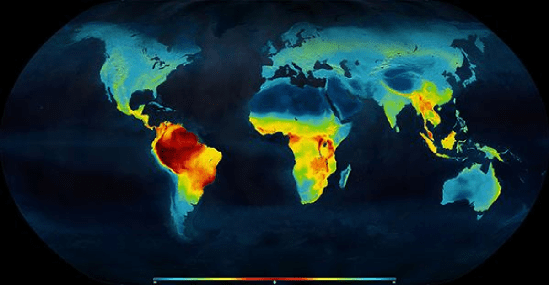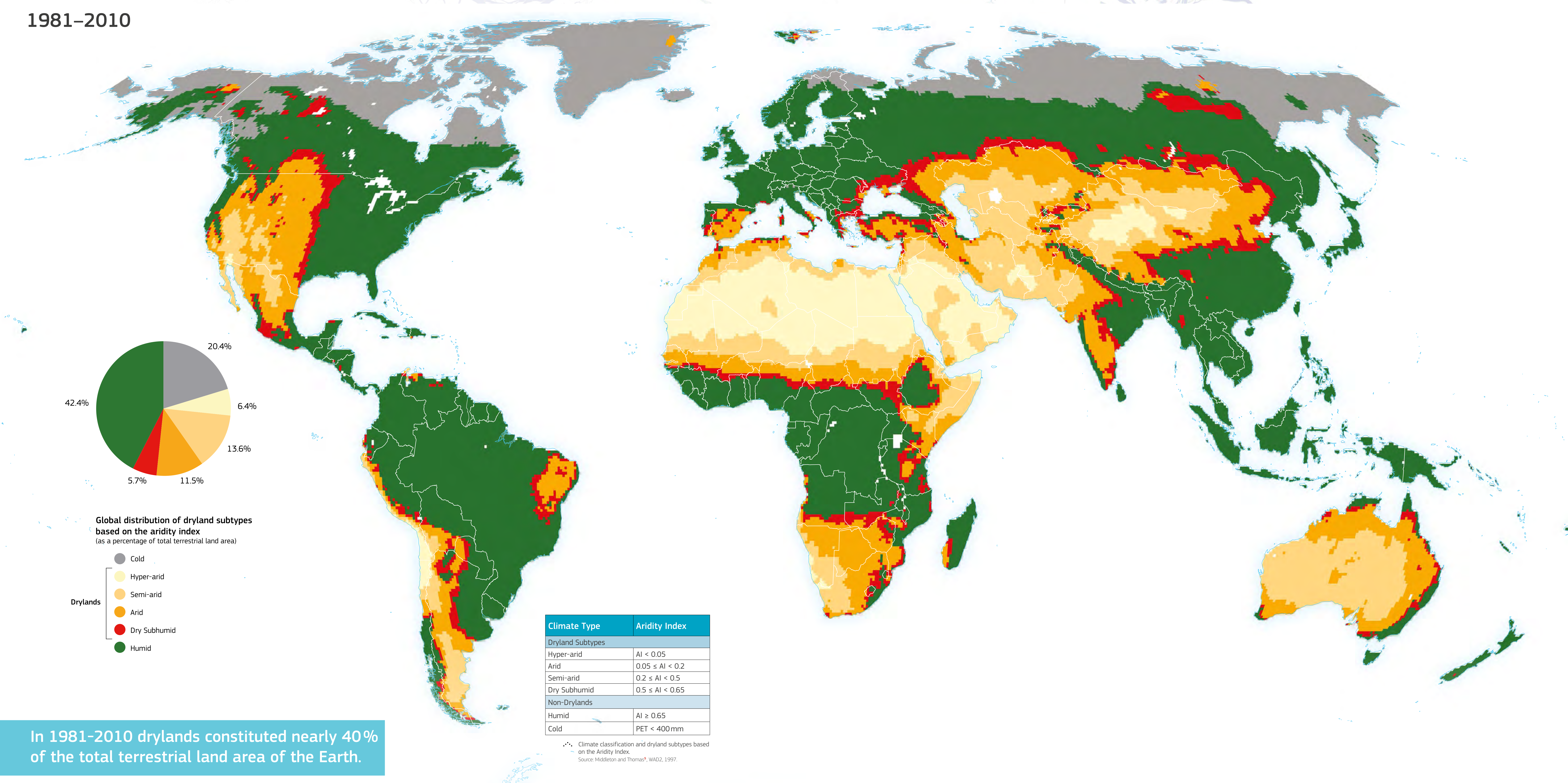Why June 5 is Special: World Environment Day 2024 Explained

The world environment day, one of the biggest international days for the environment, highlights critical issues facing our planet. [2] This year’s campaign focuses on land restoration, desertification and drought resilience under the slogan “Our land. Our Future. We are #GenerationRestoration,” with Saudi Arabia hosting the global celebrations. [1] [6]
As per the United Nations, up to 40% of the planet’s land is degraded, affecting over three-quarters of the world’s population by 2050 due to increased drought duration and desertification. [3] [5] Efforts towards soil conservation, reforestation, water harvesting, and enhancing agricultural resilience are crucial for restoring degraded land and achieving the sustainable development goals. [3] [5]
Understanding Land Degradation

Land degradation—the loss of goods and services derived from our ecosystems, such as soil, vegetation, and other plant and animal life—not only poses a serious threat to long-term food security but puts wildlife diversity in grave danger. [10]
Causes of land degradation
Taking the form of desertification, deforestation, overgrazing, salinization, or soil erosion, land degradation can be caused by biophysical factors, such as the natural topography of an area or its rainfall, wind, and temperature; and unsustainable land management practices, such as deforestation, soil nutrient mining, and cultivation on steep slopes. [10] Among the various landscape degradation processes, soil erosion is recognized as a major environmental issue that causes the loss of topsoil and nutrients, and reduces soil fertility. [11] The main drivers of water erosion include geomorphological factors, climatic factors, soil factors and human activities, such as deforestation, overgrazing, and intensive agriculture, all of which affect the soil erosion process. [11]
Impact on ecosystems and biodiversity

Landscape degradation in general and soil erosion, in particular, are associated with many negative social, political, and economic effects. [11] It jeopardizes human development achievements and current progress and development are detrimental to the next generation. [11]
Socio-economic consequences
Many studies have examined the relationship between soil erosion and various socio-economic variables to determine the effects on macro and microeconomic scales. [11] Eaton and Barbier indicated that household income could be an important factor affecting soil erosion, as some households may decide to invest in soil conservation practices based on their income. [11] Bilsborrow revealed that countries experiencing high rural population growth face widespread landscape degradation and soil erosion due to the need for more arable land. [11]
Restoration Strategies
Land restoration is a crucial step towards achieving sustainable development goals and combating desertification. Several strategies can be implemented to restore degraded lands, including:
Sustainable land management practices

Sustainable land management (SLM) practices, such as conservation agriculture, agroforestry, and soil conservation, can improve soil health, increase crop yields, and reduce land degradation. [14] [18] Techniques like crop rotation, water retention methods, and applying organic manures and fertilizers can help achieve “zero net losses” in healthy and productive land. [13]
Reforestation and afforestation initiatives
Reforestation, the restoration of degraded forest ecosystems, and afforestation, the planting of trees in non-forested areas, can help prevent soil erosion, enhance soil fertility, and restore degraded ecosystems. [15] [16] These initiatives not only promote biodiversity but also contribute to carbon sequestration and climate resilience.
Combating desertification through innovative solutions

Innovative solutions like water harvesting and management, sustainable energy development, and policy and institutional support can play a vital role in combating desertification. [18] Water harvesting techniques, such as building small dams and ponds, can increase water availability in arid regions, while sustainable energy sources like solar and wind power can reduce the need for deforestation. [18]
Collaborative Efforts
Role of governments and international organizations
Most major international institutions are active in the region, notably FAO, ESCAP, UNEP, UNDP, the World Bank, the International Monetary Fund, and the Asian Development Bank. [19] The World Conservation Union collaborates in planning environmental conservation across several countries. [19] Two regional collaborative programmes, the Asian Network on Problem Soils and Desertification Control in Asia and the Pacific (DESCONAP), have made significant contributions to coordinating knowledge on land resources, degradation, conservation, and providing policy guidelines. [19]
Community-based initiatives and public awareness
Grassroots community-based restoration and sustainable land use initiatives are emerging worldwide to address land degradation, often as alternatives to destructive practices or continuing successful traditional methods. [21] These initiatives are grounded in communities, inclusive of all affected stakeholders, and aligned with Sustainable Development Goal 15 on terrestrial ecosystems. [21] Their success depends on secure land rights, collaboration between communities, scientists, and policymakers, and access to technical and financial resources. [21]
Private sector involvement and green investment
The GEF is the financial mechanism for the UNCCD, mandated to invest in global environmental benefits from production landscapes. [20] It recognizes Land Degradation Neutrality (LDN) as a concept to reconcile food production and land resource conservation, aiming for zero net land degradation through sustainable land management and restoration. [20] The GEF strategy supports on-ground LDN implementation, creating an enabling environment, embedding LDN in planning frameworks, resolving land tenure issues, and making targeted investments to sustain productive areas, increase resilience, and prevent conflict. [20]
The private sector’s involvement is crucial, as investing in sustainable land use and food systems could generate $2.3 trillion in revenues and 70 million jobs by 2030. [24] However, convincing the private sector to invest in land restoration remains a challenge. [23] Companies can use stimulus packages to invest in profitable land restoration projects, establishing partnerships with communities to generate income from sustainable land use while repairing the environment and creating green jobs. [23] [24]
Conclusion
Land degradation poses a severe threat to our planet’s ecosystems, biodiversity, and long-term food security. The quest to restore degraded lands and combat desertification requires a multifaceted approach involving sustainable land management practices, reforestation initiatives, innovative solutions like water harvesting, and collaborative efforts from governments, international organizations, communities, and the private sector. By prioritizing land restoration and promoting environmentally conscious policies and practices, we can pave the way for a more sustainable future and ensure the preservation of our invaluable natural resources for generations to come.
The journey towards a healthier and more resilient planet starts with individual actions and collective efforts. Each of us can contribute by embracing sustainable lifestyles, supporting community-based restoration initiatives, and advocating for policies that prioritize environmental conservation. As we celebrate World Environment Day, let us renew our commitment to being responsible stewards of our land and work towards a future where human development coexists harmoniously with the preservation of our natural ecosystems.
FAQs
1. What is the significance of celebrating World Environment Day on June 5th?
World Environment Day is observed annually on June 5th to remind us of our duty to preserve, protect, and restore ecosystems. This date was designated by the United Nations General Assembly in 1972, emphasizing global environmental responsibility.
2. What makes World Environment Day unique?
World Environment Day, celebrated every year on June 5th, is dedicated to enhancing global awareness and encouraging actions for environmental protection. It calls for collective efforts from individuals, communities, and nations to safeguard our planet.
3. What historical event prompted the celebration of June 5th as World Environment Day?
The celebration of World Environment Day began in 1973, following the United Nations Conference on the Human Environment, which took place on June 5, 1972, in Stockholm, Sweden. Since then, this day has been commemorated worldwide annually to focus on environmental issues.
4. What are the primary goals of World Environment Day?
The main goals of World Environment Day are to educate the public about critical environmental challenges and to emphasize the importance of sustainable practices. It also aims to engage individuals, communities, and organizations in activities that foster environmental protection and conservation.
References
[1] – https://www.worldenvironmentday.global/about/theme-host
[2] – https://www.unep.org/events/un-day/world-environment-day-2024
[3] – https://www.vaticannews.va/en/world/news/2024-06/world-environment-day-saudi-arabia-pope-faith-for-earth.html
[5] – https://www.vaticannews.va/en/world/news/2024-06/world-environment-day-saudi-arabia-pope-faith-for-earth.html
[6] – https://www.worldenvironmentday.global/about/theme-host
[7] – https://www.state.gov/dipnote-u-s-department-of-state-official-blog/science-speaks-land-degradation/
[8] – https://www.worldwildlife.org/threats/soil-erosion-and-degradation
[9] – https://onlinelibrary.wiley.com/doi/abs/10.1002/9781119910527.ch4
[10] – https://www.ifpri.org/blog/land-degradation-bad-humans-bad-biodiversity
[11] – https://www.ncbi.nlm.nih.gov/pmc/articles/PMC8872238/
[12] – https://onlinelibrary.wiley.com/doi/10.1002/ldr.1069
[13] – https://www.unccd.int/land-and-life/land-management-restoration/overview
[14] – https://www.decadeonrestoration.org/publications/restoring-life-land-role-sustainable-land-management-ecosystem-restoration
[15] – https://tracextech.com/afforestation-vs-reforestation/
[16] – https://climate-adapt.eea.europa.eu/en/metadata/adaptation-options/afforestation-and-reforestation-as-adaptation-opportunity
[17] – https://www.horizon-europe.gouv.fr/innovations-prevent-and-combat-desertification-33976
[18] – https://www.green.earth/desertification
[19] – https://www.fao.org/4/v4360e/V4360E0b.htm
[20] – https://www.thegef.org/what-we-do/topics/land-degradation
[21] – https://www.bothends.org/en/Our-work/Dossiers/The-merits-of-community-based-restoration/
[22] – https://www.globallandscapesforum.org/wp-content/uploads/2021/05/GLF-Africa-2021-white-paper-Roots-of-Restoration.pdf
[23] – https://news.cgtn.com/news/2020-06-17/Private-sector-investment-crucial-to-combat-desertification-UNCCD-RojZF6dNvy/index.html
[24] – https://www.unccd.int/convention/partners/private-sector
[25] – https://www.earth.com/news/world-environment-day-2024-a-call-for-land-restoration/
[26] – https://www.theweek.in/leisure/society/2024/06/05/world-environment-day-history-significance-and-all-you-need-to-know.html
[27] – https://unu.edu/ehs/series/land-restoration-5-key-elements-reviving-our-earth
[28] – https://news.climate.columbia.edu/2020/10/26/land-restoration-heal-planet/
[29] – https://www.resourcepanel.org/reports/land-restoration-achieving-sustainable-development-goals
[30] – https://blogs.worldbank.org/en/arabvoices/fostering-a-sustainable-future–the-role-of-land-restoration-in-saudi-arabia




